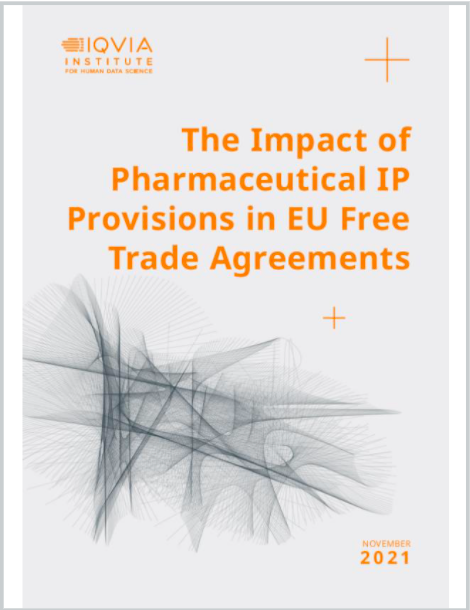The Impact of Pharmaceutical IP Provisions in EU Free Trade Agreements
This report examines the impact of past EU FTAs on drug spending, timing of countries’ access to new medicines after global launch, investments overall and in pharmaceuticals, and clinical trial participation.

Global trade is increasingly composed of free trade agreements (FTAs) between large trading blocs as well as between smaller, non-aligned countries. These involve tariff-free or -reduced trade in desirable products balanced with concessions for other products or policy changes. The larger, more developed trading blocs like the U.S. or EU also include novel intellectual property provisions in their FTAs with partner countries. On the surface, longer periods of IP protection might be expected to drive up drug costs and would warrant a trade-off in concessions from another industrial sector. This assumption has been debated by researchers and stakeholders and deserves further study.
This report examines the impact of past EU FTAs on drug spending, timing of countries’ access to new medicines after global launch, investments overall and in pharmaceuticals, and clinical trial participation. These are all areas with both economic and societal importance, as well as perceived value to be traded during FTA negotiations. Past studies have studied the impact on U.S. FTAs, and this study brings important new evidence relating to EU FTAs at both a macro and a detailed level.
Key findings
- The pharmaceutical sector is the most R&D intensive industry in the world, with R&D spending averaging over 15% of revenue compared to other sectors that are often only in the low single digits.
- Strong IP provisions in EU FTAs have a positive impact on investments across industries in the EU and its FTA partner countries.
- While expanded IP protections could in theory generate higher drug spending, past EU free trade agreements (FTAs) that included pharmaceutical IP protection have shown that drugs’ share of healthcare spending tends to stay flat or fall after an FTA, and that prices for medicines rise more slowly than the level of inflation.
- A strong IP index is correlated with increased clinical trial activity in a country, which can bring both clinical and economic benefits.